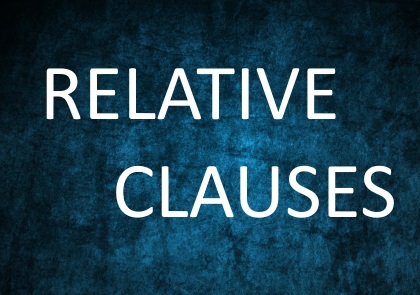Relative clauses are non-essential parts of a sentence. They may add meaning, but if they are removed, the sentence will still function grammatically. There are two broad types of relative clauses in English. It is important to distinguish between them because it affects the choice of pronoun used to introduce the clause.
DEFINING CLAUSES
A defining or identifying clause tells us which specific person or thing we are talking about in a larger group of people or things. If a defining relative clause is removed, the meaning of the sentence changes significantly. A defining relative clause is not separated from the rest of the sentence by commas or parentheses.
EXAMPLES
- The woman who visited me in the hospital was very kind.
- The umbrella that I bought last week is already broken.
- The man who stole my backpack has been arrested.
- The weather that we had this summer was beautiful.
NON-DEFINING CLAUSES
A non-defining or non-essential clause gives us more information about the person or thing we are talking about. If a non-defining relative clause is removed from a sentence, we lose some detail, but the overall meaning of the sentence remains the same. Non-defining relative clauses are always set off from the rest of the sentence with commas or parentheses.
EXAMPLES
- The farmer, whose name was Fred, sold us 10 pounds of potatoes.
- Elephants, which are the largest land mammals, live in herds of 10 or more adults.
- The author, who graduated from the same university I did, gave a wonderful presentation.
- My mother, who is 86, lives in Paris.
